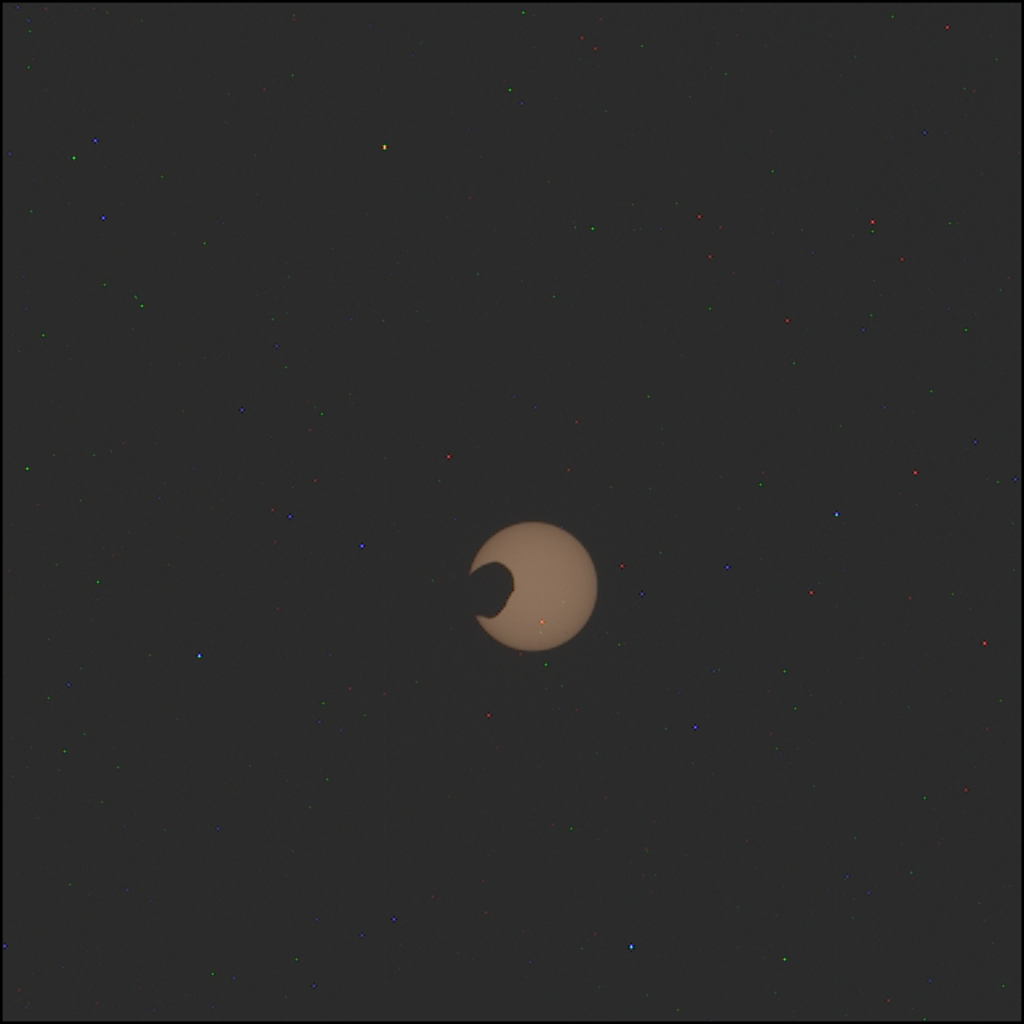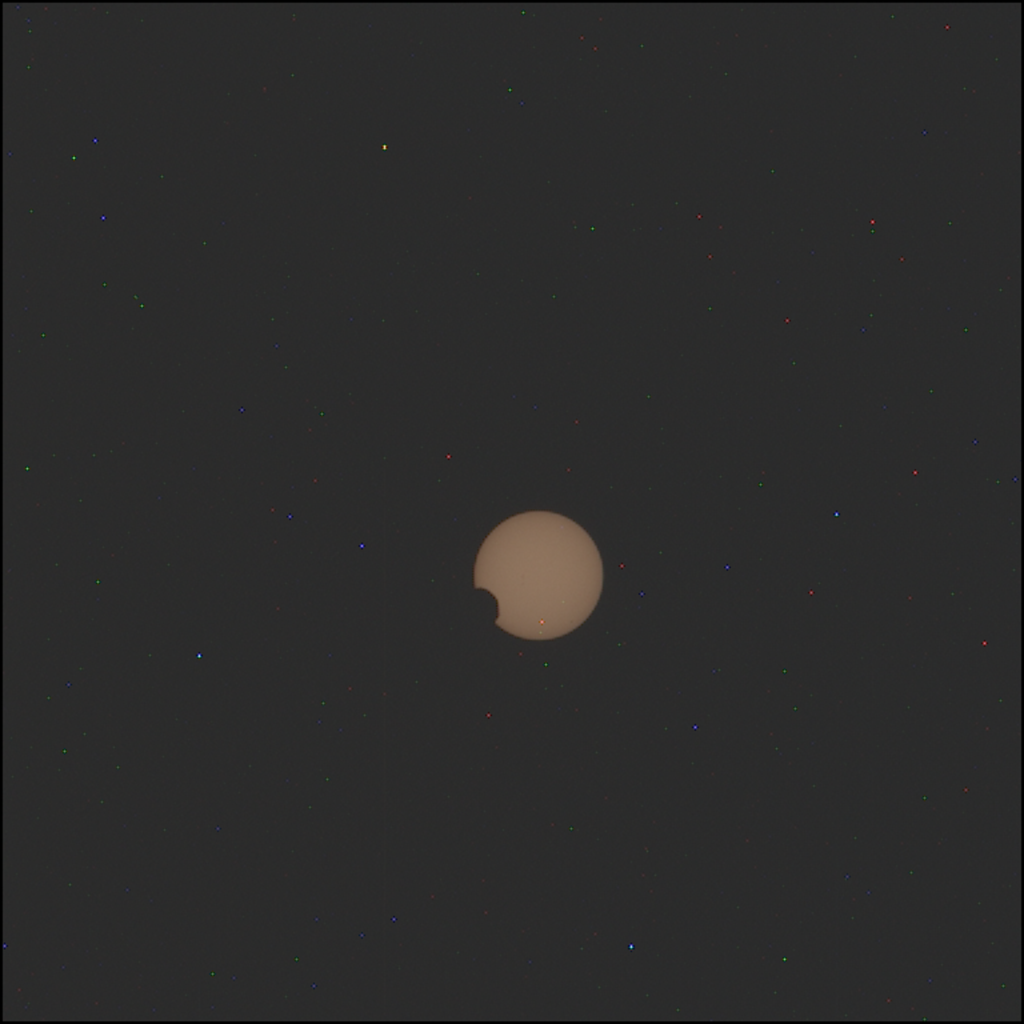
Only two months from now, a long swath of North America will be shrouded in darkness by a rare total solar eclipse. As if to add to the anticipation, NASA has now released images of another eclipse more than 140 million miles away, on Mars.
Captured by NASA’s intrepid Perseverance rover, the Martian moon Phobos was observed making a transitory voyage across the sun — an event that serves not only as a spectacle but also a scientific boon.
From the rugged terrain of Mars’ Jezero Crater, Perseverance, a robotic explorer that has called the Red Planet home since 2021, turned its gaze skyward on February 8. Through the lens of its Mastcam-Z, a camera designed to stitch together panoramic vistas of the Martian landscape, the robot witnessed how Phobos, the oddly-shaped satellite of Mars, performed a brief solar transit. This moment was captured by a sequence of 68 images, now accessible online.
Unlike the total solar eclipses familiar to Earthlings, where the moon cloaks the sun in complete darkness, Phobos — which measures only 17 miles at its widest — could not obscure the sun entirely. Yet the view is still spectacular, offering a unique glimpse into the cosmic interactions of Mars’ moons and their parent planet.


This serves as a reminder that eclipses are not unique to Earth. Any planet graced with moons can witness such events, though the nature of these eclipses varies widely. Mars, with its small moons, can only experience partial solar eclipses. This contrasts starkly with the anticipation of Earth’s next total solar eclipse on April 8, when day will momentarily turn to night in some regions in Mexico, the United States, and Canada.
In the U.S, just 15 lucky states will be visited by the Moon’s shadow during the total solar eclipse: Texas, Arkansas, Oklahoma, Missouri, Tennessee, Illinois, Kentucky, Indiana, Ohio, Michigan, Pennsylvania, New York, Vermont, New Hampshire, and Maine.
Observations of Phobos’ transit across the sun help scientists track subtle shifts in the moon’s orbit. Such measurements are key to understanding the internal composition of Mars, as Phobos’ gravitational pull interacts with the Martian crust and mantle.
Phobos’ name, derived from the Greek word for “fear,” is a fitting moniker for a moon with a grim destiny. Unlike its more distant sibling Deimos, Phobos is spiraling inexorably toward Mars, doomed to either collide with the planet or shatter into a ring system. This inevitable conclusion, drawing closer by about six feet every century, is a stark reminder of the dynamic and often violent nature of cosmic evolution.






